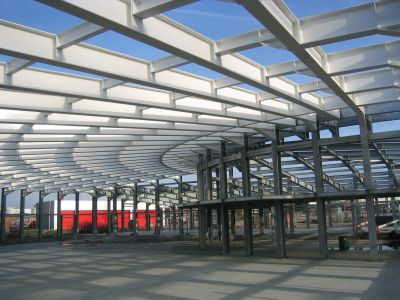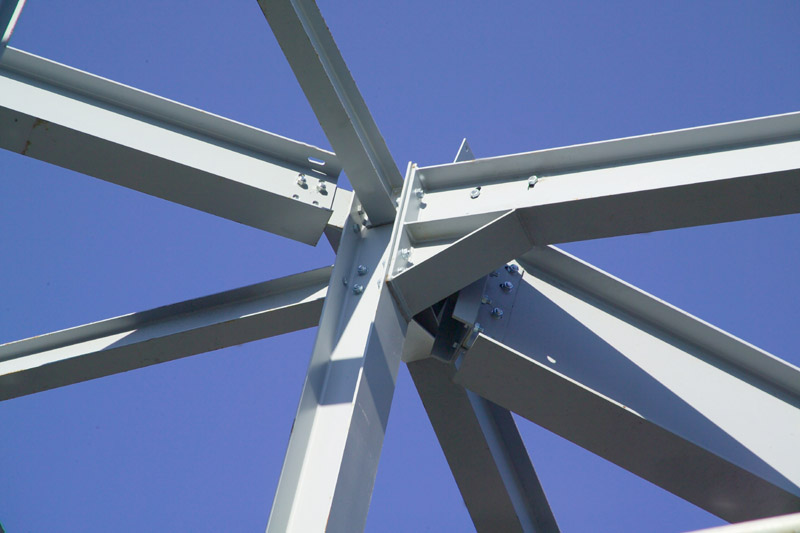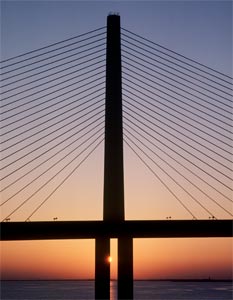Design of Structural Steel Connections for Building and Bridge Construction (1.2 CEUs)
|
Course Code:
|
CVL073
|
|
Date:
|
29 Nov
-
30 Nov 2010
|
|
Location:
|
Executive Airport Plaza
7311 Westminster Hwy
Richmond, BC
V6X 1A3
Note: Please do not book travel and accommodation until you receive course confirmation.
|
|
A certificate of completed Continuing Education Units (CEUs) will
be granted at the end of this course. |
 |
Daily Schedule:
8:00am - Registration and coffee (1st day only)
8:30am - Session begins
5:00pm - Adjournment
Breakfast, two refreshment breaks and lunch are provided daily.
Description
Connections form a very important part of any steel structure and integrity of the structure depends on them. Accurate details and specifications are required for fabrication to ensure trouble-free erection. There is a potential for achieving economy in designing and specifying connections which is the focus of this workshop. Results of recent research on steel connection detailing and fabrication will be briefly introduced. The seminar will focus on connection design specifications as set forth in the CSA Structural Steel Design Standard, CAN/CSA-S16-09, and the Canadian Highway Bridge Design Code, CAN/CSA-S6-06. The seminar will include update of changes in S16-09 as compared to S16-01. Seminar notes will include numerous design examples prepared by the instructor for teaching purposes.
Objective
To provide participants with the methodology for designing, detailing and specifying steel connections.
Who Should Attend
Structural designers, consulting engineers, detailers, specification writers, civil engineers in large industries, technicians and technologists, fabricators and erectors of steel structures.
Bring With You
Your own Handbook of Steel Construction-Latest Edition (2010) and the book: Hollow Structural Section: Connections and Trusses- A Design Guide, Latest edition by J.A. Packer and J.E. Henderson. You can obtain both books from the Canadian Institute of Steel Construction.
Program Outline (1.2 CEUs / 12 PDHs)
Day I
Introduction
Design Loads for connections:
- Loads on connectionsDesign load specified in structural drawings
- NBCC-2005 Load combinations for ultimate limit state design
- Steel material properties
- Design examples
Types of steel member connections
- Axial Tension connections
- Hanger connection
- Light bracing
- Bearing and compression connections
- Column splice
- Beam bearing plate
- Column base plate
- Simple framed beam-shear connections
 Double angle beam connections Double angle beam connections
- End plate connections
- Single-angle beam connections
- Shear-tab beam connections
- Tee-type beam connections
- Seated beam shear connections
- Un-stiffened angle seat connections
- Stiffened seated beam connections
- Moment connections
- Flange welded
- Flange plate
- Moment end plate
- Moment splice
- Column stiffener
- Crane runway connections
Design of Tension members and applicability to connection design
- Failure modes
- Tension capacity of members and eye bars with bolted connection
- Shear lag effect
- Tension-shear block failure in members and plates
- Tension-shear block failure in coped beams
- Tension capacity of members with welded connection
- Design examples
Need for web stiffeners
- Failure due to web crippling and over-all web buckling
- Effects of concentrated loads or support reactions
- Determination of size of intermediate transverse stiffeners
- Determination of size of bearing stiffeners
- Stiffener requirements for beam-column connections
- Design examples
Bolt materials and types
- Bolt types, geometry and sizes
- Basic behavior
- Bolt strength
Bearing-type connections
- Failure modes
- Bolt bearing and shear resistance
- Bolt arrangement
- Bolts in direct tension
- Prying action
- Bolts in combined shear and tension
- Design examples
Slip-critical type connections
- Bolt shear resistance
- Bolts in combined shear and tension
- Design examples
Day II
Specifications for installation and inspection of bolts
- The calibrated wrench
- The turn-of-the-nut method
- The use of direct tension indicators
- The use of “twist off” or “tension-control” bolts
Effect of low temperature in the actual bolt pretensioning: recent research
Eccentric-bolted connection in shear
- Bracket-column connection
- Beam and girder splices
- Bolts in angle-to-beam connection
- Design examples
Eccentric-bolted connection in combined shear and tension
- Bracket-column connection
- Design examples
Concentric welded connection
- Weld types
- Weld strength
- Weld detailing
- Lamellar tearing in welding
- Beam welded splice connection design examples
- Beam-column welded connection design examples
- Design example for corner beam-column welded connection carrying shear, thrust and moment
- Design example for interior beam-column welded connection carrying shear, thrust and moment
- Design examples for weld length and size for intermediate transverse stiffeners and bearing stiffeners
Eccentric-welded connection in shear
- Bracket-column connection
- Beam and girder splices
- Bolts in angle-to-beam connection
Design examples
Eccentric-welded connection in combined shear and tension
- Bracket-column connection
- Design examples
Joints with combined bolts and welds
Use of CISC design tables in connection design
- Class participation through instructor’s examples
Base plate design
- Column-to-concrete footing connection
- Anchor bolt design for strength
- Anchor bolt design for fatigue
- Connection between chimney, stack, bins and silos to supporting steel of concrete or steel base
- Design examples
Design of gusset plates: Whitmore criterion for yielding and buckling
Connection Design for earthquake
CAN/CSA-S6-06 versus CAN/CSA-S16-01 for structural steel connection
After Participating in this Course, You will be Able to:
- Achieve economy on your projects by the skills developed through participating on designing and detailing of connections under instructor guidance
- Design bolted and welded connections as well as the combined bolted and welded connections for strength and fatigue
- Apply methods learnt from the course to achieve economy in design, fabrication and erection of steel structures
 |
Instructor
Khaled Sennah, Ph.D., P.Eng., P.E., Full Professor of Structural Engineering with Ryerson University, Toronto, Ontario, Canada. He has over 23 years of research, teaching and industrial experience in the area of structural engineering, with particular emphasis on bridges. He designed and shared in design of major multimillion-dollar projects in United States of America, Canada, Saudi Arabia and Egypt. At Ryerson University, he teaches Structural Steel Design, Structural Dynamics and Bridge Design & Construction courses.
His core area of expertise includes design, evaluation, retrofit and rehabilitation of bridge infrastructure on which he published more than 100 publications. His scope of research includes Compressive resistance of solid rounds, web crippling and local buckling of cold-formed steel lapped channels, structural qualification of sandwich foam-timber panels in building construction, seismic qualification of mechanical anchors in concrete, prefabricated bridge systems and connection technologies, precast concrete barriers, FRP-reinforced bridge barriers and rehabilitation of bridge girders using FRP technology.
|
To register for this course click on the register button above, or by fax. To register
by fax, download and fill our registration form,
then fax it to (888) 849-4871. Mail your cheque to our address
. If you have a question regarding this course, please click
here.
P.S. TLNT can offer many of our courses at a location of your choice, at your convenience
and tailored to your special needs. For more information, please contact us.
Course Materials:
Each participant will receive a complete set of course notes and handouts that will
serve as informative references.
TLNT reserves the right to cancel or change the date or location of its events. TLNT's responsibility will, under no circumstances, exceed the amount of the fee collected. TLNT is not responsible for the purchase of non-refundable travel arrangements or accommodations or the cancellation/change fees associated with cancelling them. Please call to confirm that the course is running before confirming travel arrangements and accommodations. Please click here for
complete policies.
|
|